What Is SAT Writing and Language
Author
Hartwell
Date Published

Stephen King famously said, "To write is human, to edit is divine." Anyone who has written a school paper knows that first, second, or even third drafts are often riddled with errors. However, through careful editing and revising, you can refine your writing and bring it to its best form.
In the SAT Writing and Language section, you step into the role of that "divine" editor. You'll be tasked with improving paragraphs by addressing both minor issues, like grammar and word usage, and larger concerns, such as organization and coherence.
Your Writing and Language score will be combined with your Reading score, forming a single verbal score out of 800. However, this section is distinct and requires its own targeted preparation. This guide serves as your starting point for mastering the Writing and Language portion of the SAT. Keep reading to discover all the key details you need to know!
Key Changes in the SAT Writing and Language Section
The revamped SAT Writing and Language section introduces several differences from the previous SAT Writing section – starting with its name. It’s now called Writing and Language, though many still refer to it simply as SAT Writing. I'll do the same here unless distinguishing specifically between the old and new versions. While both sections test your grasp of English language conventions, the updated Writing and Language section has notable changes.
One major shift is its emphasis on how language operates within various contexts, which may explain the name change. Unlike before, the questions are no longer isolated; you won’t answer stand-alone questions about fixing individual sentences. Instead, all questions are now based on passages. These questions often require you to enhance the meaning, style, or flow of ideas within the text.
With the transition to passage-based questions, topics like “sentence completions” and “identifying errors” have been removed entirely. While you’ll still apply grammar and punctuation rules to correct sentences, these corrections are now presented within the context of a broader passage or paragraph.
Another significant update involves scoring. Your SAT Writing and Language score is now merged with your Reading score to create a single verbal score ranging from 200 to 800. While the score report will display your individual performance in each section, colleges will primarily consider the combined verbal score alongside your math score.
To summarize the key changes:
The section is now called Writing and Language.
You'll address both detailed editing (grammar, word choice, punctuation) and larger-scale improvements (organization, flow, tone).
All questions are passage-based, and isolated questions like "sentence completions" are no longer included.
Writing and Reading scores are combined to form one verbal score out of 800.
Now that you’re familiar with the main updates, let’s explore how the SAT Writing and Language section is structured and what to expect!
How Is the SAT Writing and Language Section Structured?
As previously mentioned, the SAT Writing and Language section is different from the old SAT Writing test, so be careful not to confuse the two as being the same. The new structure introduces several changes that make the current section unique.
On test day, the SAT Writing and Language section comes second, immediately following the Reading section and a five-minute break. After taking a moment to stretch and grab a snack, you’ll dive into the Writing section, which consists of 44 questions to be completed in 35 minutes. This means you’ll have about 47 to 48 seconds to answer each question.
Like the Reading section, the SAT Writing questions are all multiple-choice and offer four answer options: A, B, C, or D. However, unlike the old SAT Writing test, every question in this section is passage-based. While some questions may focus on details, such as a single word or sentence, they are always rooted in the broader context of the passage.
The Writing and Language section includes four passages. Each passage is about four to five paragraphs long and typically ranges from 400 to 450 words. You’ll answer 11 questions for each passage, bringing the total to 44 questions.
To make things more manageable, you won’t need to flip back and forth through the test booklet to locate information. The questions are neatly aligned with the paragraphs they refer to, so you can easily match the questions to the relevant sections of the text. The layout is designed to save you time and keep the process straightforward. For example, the passage will be clearly organized, continuing directly from any previous section if necessary.
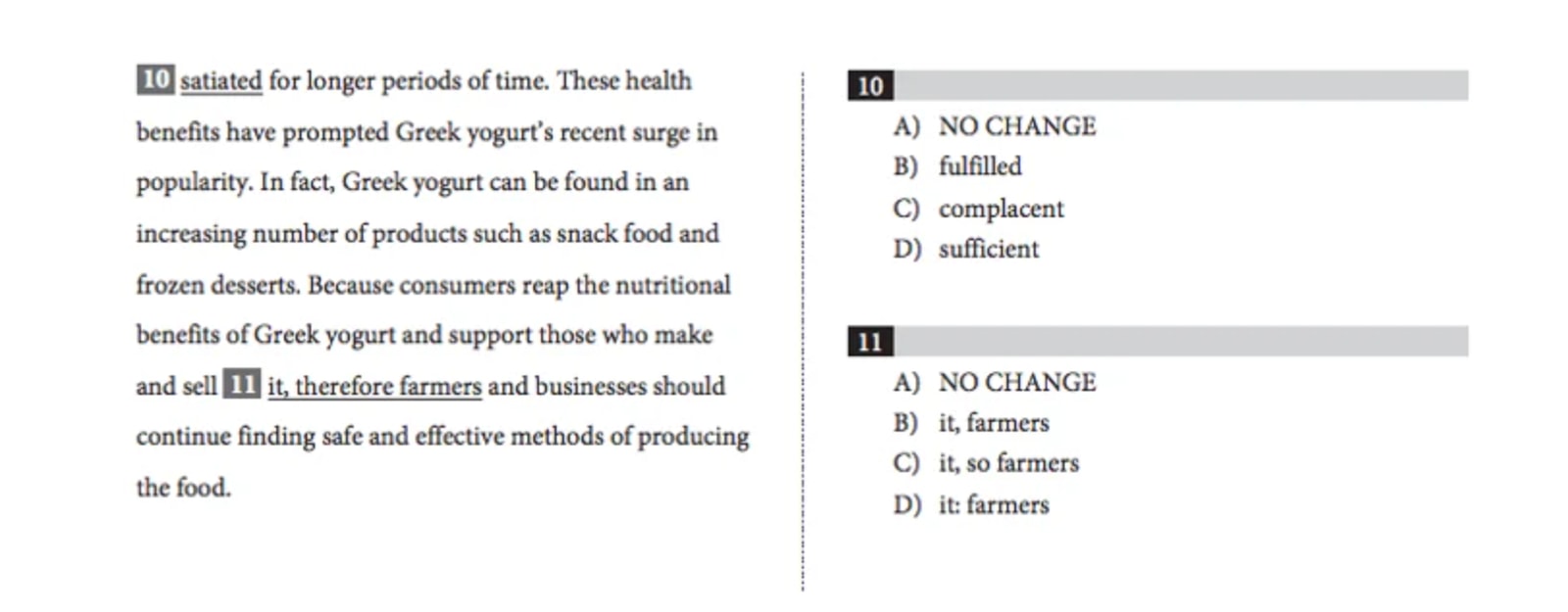
In addition to being aware of the number of passages and questions, you’ll also be able to predict the general topics covered in each passage.
What Are the SAT Writing Passages Like?
While you won’t know the exact content of the Writing passages ahead of time, you can anticipate their general topics. According to the College Board, the passages always cover one of four broad areas: careers, social studies, the humanities, and science.
Careers: These passages may discuss trends, advancements, or debates in major industries such as business, technology, or healthcare.
Social Studies: Topics might include ideas or research from fields like history, anthropology, psychology, political science, or sociology.
Humanities: Passages in this category often center on arts and literature, highlighting an author or describing trends in areas like prose, poetry, art, music, or dance.
Science: These passages focus on topics from disciplines like earth science, biology, chemistry, or physics.
Unlike the SAT Reading section, the Writing section does not include prose fiction. Instead, the passages are presented in functional formats, such as arguments, informative or explanatory texts, or nonfiction narratives. Additionally, some passages may feature informational graphics, such as charts, graphs, or tables, to complement the text. These graphics aren’t restricted to the math section anymore and can appear throughout the SAT!
Now that you’re familiar with the structure and format of SAT Writing and Language, let’s explore the specific skills it’s designed to test.
What Skills Does the SAT Writing and Language Section Test?
The SAT Writing and Language section evaluates a wide range of skills, from detail-oriented grammar and punctuation knowledge to assessing your ability to organize information and develop ideas effectively. In essence, the test ensures that you can use language efficiently to convey and support complex ideas while maintaining clarity and coherence. With the addition of graphics, it also assesses your ability to interpret and accurately incorporate data as part of the written content.
Unlike the SAT Essay (which is optional), you won’t be asked to craft original paragraphs. Instead, your role is to identify and correct errors in prewritten texts and improve their structure and organization. This includes revising texts for grammar, usage, punctuation, and style, as well as addressing big-picture issues like flow and idea development. A few questions also assess vocabulary skills, asking you to analyze word choice and its impact on tone and meaning.
According to the College Board, the SAT Writing and Language section covers four key skill areas:
Command of Evidence: Demonstrating the ability to support ideas with evidence from the text.
Words in Context: Using language effectively by selecting precise words and improving tone and style.
Expression of Ideas: Revising passages to improve their focus, organization, and clarity.
Standard English Conventions: Mastering the rules of grammar, usage, sentence structure, and punctuation.
Here’s how these skill areas break down in terms of question distribution:
About 24 questions (55%) focus on Command of Evidence, Words in Context, and Expression of Ideas. These questions test your ability to develop ideas, structure your writing, and use language effectively.
About 20 questions (45%) focus on Standard English Conventions, assessing your knowledge of grammar, sentence structure, and punctuation.
Additionally, between 2 and 4% of all questions ask you to interpret data from a graphic, such as a chart, graph, or table. These questions typically require you to revise a sentence so that it accurately reflects the information presented in the graphic.
Here’s an example of a typical data interpretation question:
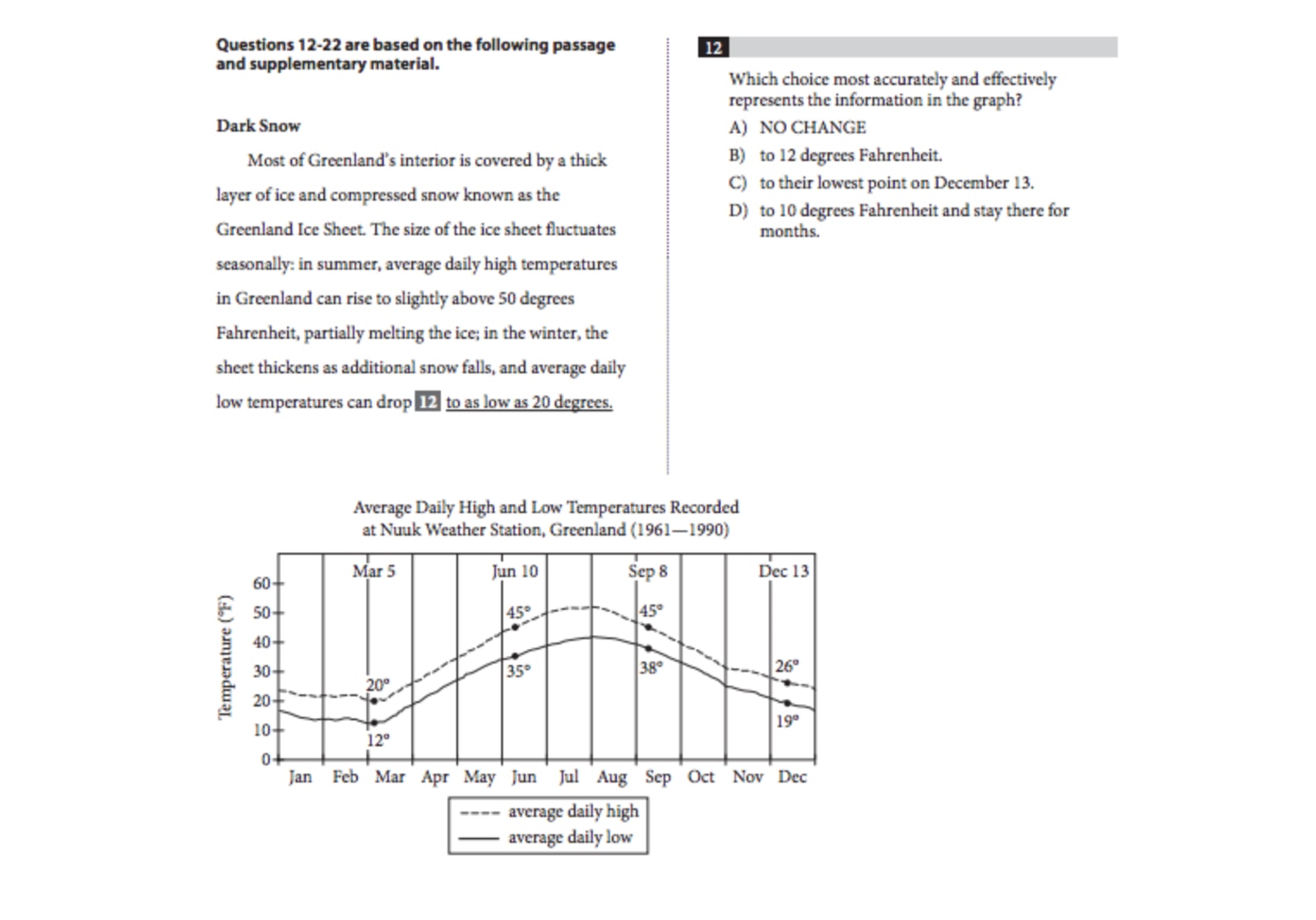
Now that you have a clear understanding of the structure and purpose of the SAT Writing and Language section, let’s explore each major skill area in greater detail. Continue reading to uncover the key concepts tested in this section and review an official sample question for each skill category.
#1: Command of Evidence
Command of Evidence questions focus on improving how information and ideas are developed in a passage. These are considered "big picture" questions, as they require you to evaluate the overall meaning and function of the text. You may be asked to add a supporting detail, select a sentence that strengthens the argument, or improve the passage's coherence.
Because these questions deal with the overall purpose of a passage, they typically require that you read and understand the entirety of the text before answering. For example, the sample question below presents a Command of Evidence task, asking you to choose the sentence that best introduces the main topic of the paragraph.
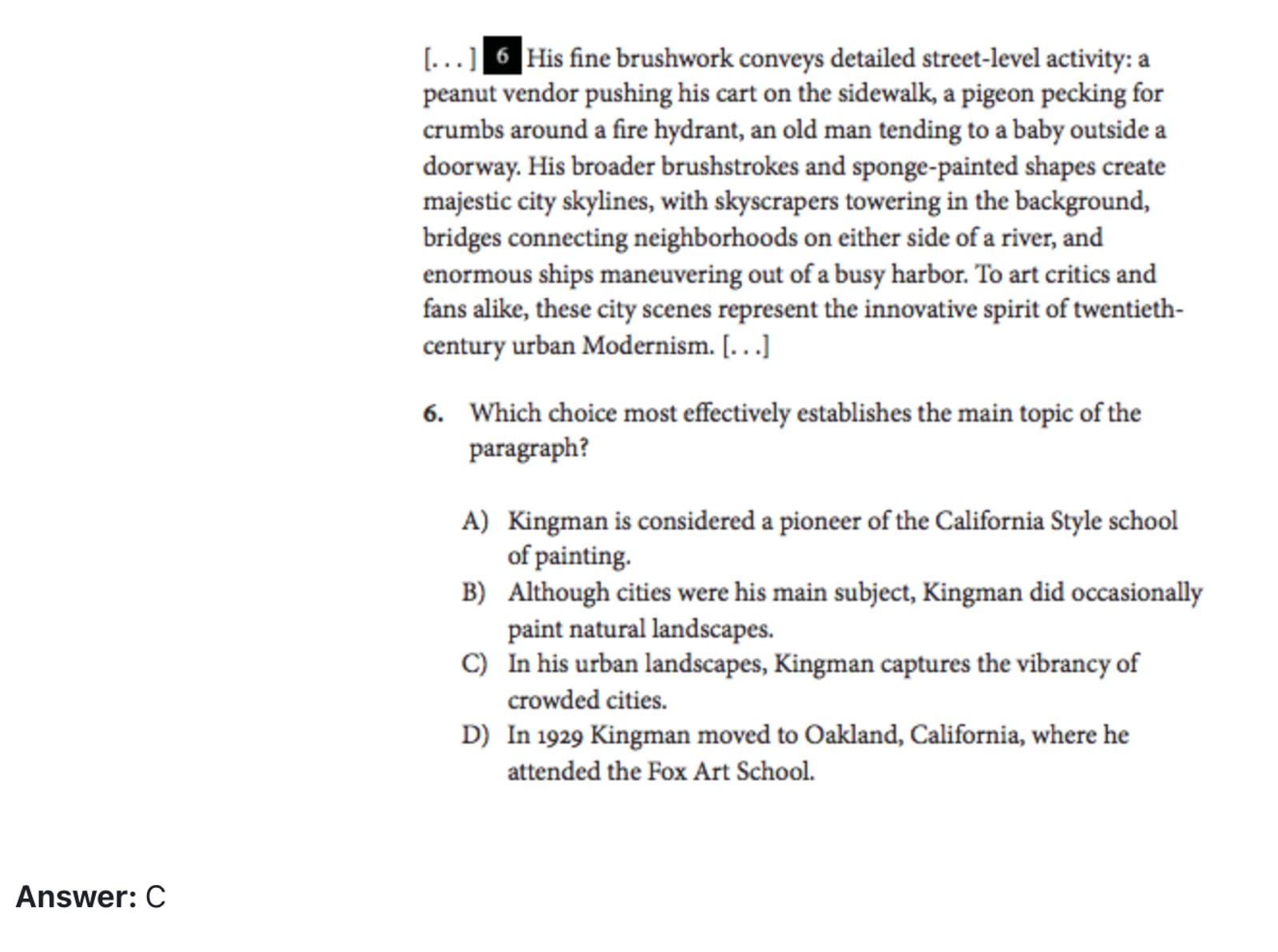
#2: Words in Context
Words in Context questions test your ability to analyze vocabulary and word choice—also referred to as diction. Based on the surrounding context, you’ll need to choose the most appropriate word or phrase to convey the intended meaning. In some cases, you’ll correct an error, and in others, you’ll replace an existing word with one that enhances the passage’s tone or style.
Unlike Command of Evidence questions, Words in Context questions often reference a specific sentence or line within the passage. While you can sometimes answer these questions without reading the entire passage, having a clear understanding of the overall context is always beneficial.
Another important consideration is recognizing when no error exists. That’s why the first answer option (A) in these questions is always “No Change.” In the example below, you’re asked to choose the correct word for the sentence, but note that this question focuses on common vocabulary with nuanced or multiple meanings rather than obscure or complex terms.

#3: Expression of Ideas
Returning to the "big picture," Expression of Ideas questions assess the organization and overall effectiveness of a passage. These questions may ask you about the order of sentences, whether specific sentences are necessary, or how to restructure a paragraph for better flow or stronger support of an argument.
For example, the sample question below asks whether a particular sentence should be kept or deleted. To answer, you’ll need to understand how the sentence functions within the paragraph and support your decision with reasoning.
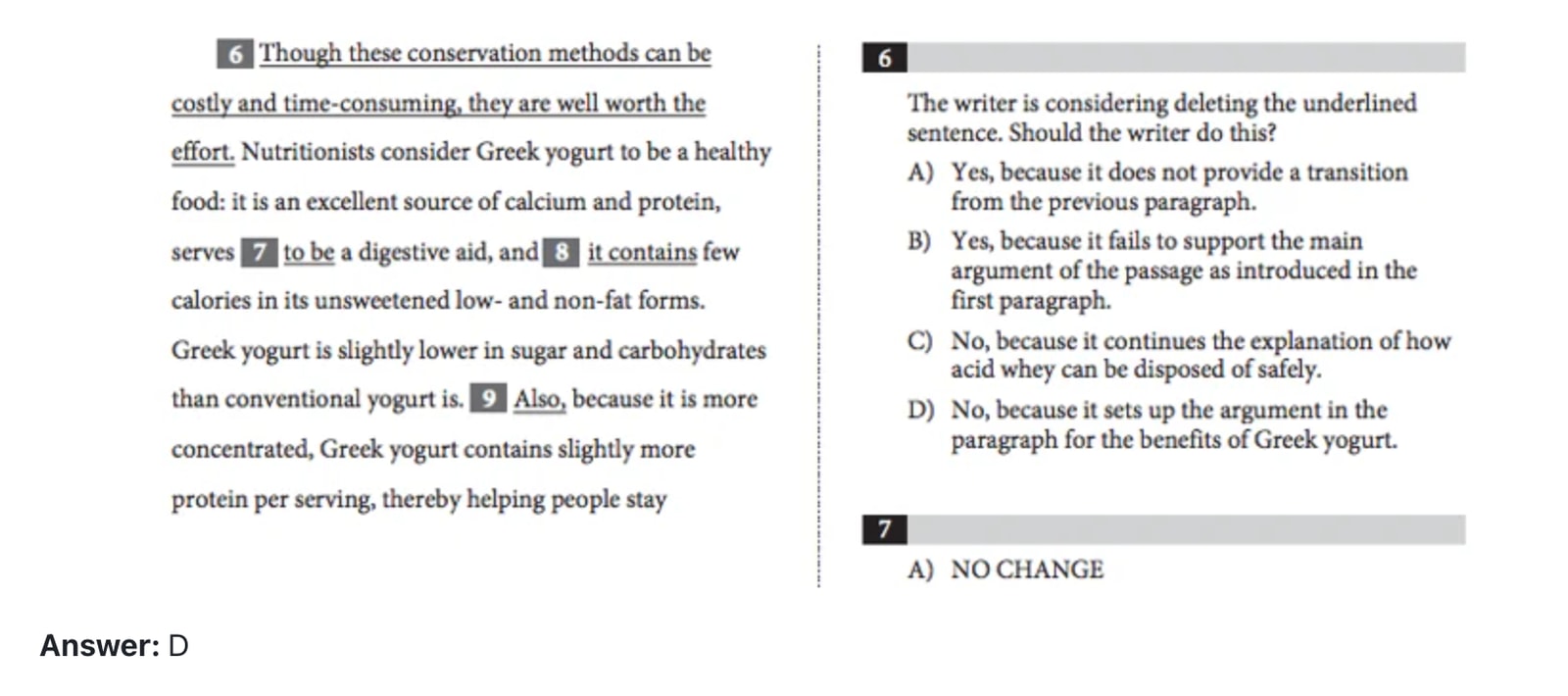
#4: Standard English Conventions
This final category is likely what most people associate with the SAT Writing and Language section: detail-oriented grammar questions. These tasks test your knowledge of sentence structure, usage, and punctuation. You may be asked to identify and correct errors in clauses, sentence construction, or punctuation.
Some of the grammar topics you’ll encounter include:
Verb tense: Ensuring consistency across a sentence or passage.
Parallel construction: Maintaining grammatical consistency in lists or comparisons.
Subject-verb agreement: Confirming verbs match their subjects in number and tense.
Pronoun use: Ensuring appropriate agreement and clarity of pronouns.
Punctuation rules: Proper use of commas, apostrophes, colons, and semicolons.
The following sample questions provide examples of Standard English Conventions tasks. The first focuses on subject-verb agreement and verb tense, while the second tests subject-possessive pronoun agreement and the difference between “it’s” and “its.”
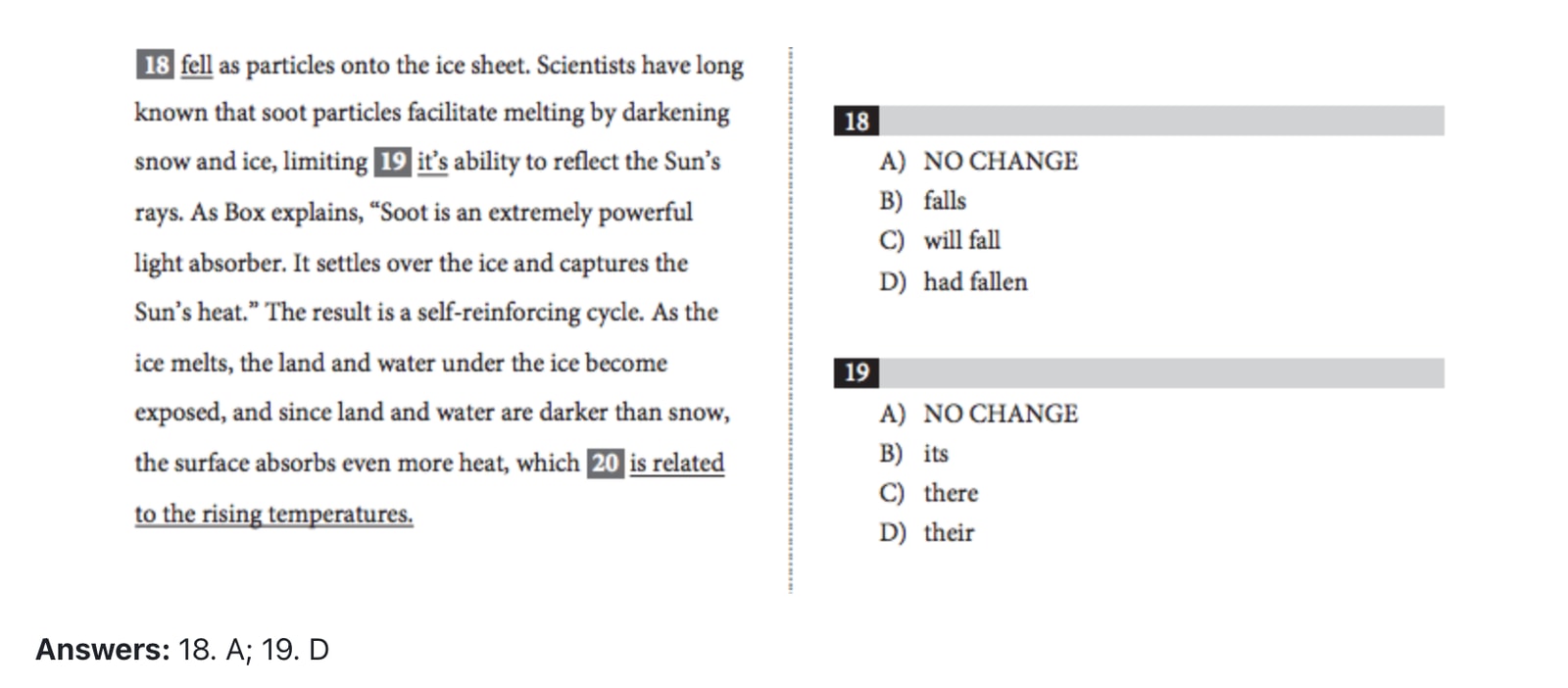
Your first step in preparing for the SAT Writing and Language section is understanding exactly what’s tested—and if you’ve read this far, congratulations! You’ve already completed that initial step. But what else can you do to strengthen your skills for test day? Let’s explore the next stages of your SAT prep.

How to Study for SAT Writing
If you thought SAT Writing was only about grammar rules, think again! This section tests much more than just technical correctness. It also evaluates your ability to edit entire paragraphs and passages for logical flow, organization, tone, and overall argument.
While studying grammar rules and punctuation remains a vital component of your prep, you'll also need to refine your skills in writing, editing, and understanding sentence construction. So how can you develop the editorial expertise needed to ace this section? Read on for five practical study tips!
#1: Master the Rules of Grammar, Punctuation, and Usage
As noted earlier, approximately 45% of SAT Writing questions focus on Standard English Conventions. This is why a solid understanding of grammar rules, punctuation, and sentence mechanics is essential for success. Luckily, there are plenty of resources available to help you review these topics—whether designed for the current SAT or older versions of the test.
Your study materials should thoroughly cover the essential grammar concepts, including:
Parallel structure
Modifier placement
Verb tense consistency
Subject-verb agreement
Pronoun-antecedent agreement
Punctuation rules: Items in a series, end-of-sentence punctuation, and within-sentence punctuation
For a concise guide to these rules, you can check pages 63 and 67 of the College Board’s official guide to the redesigned SAT. This resource provides a clear breakdown of the rules you’ll encounter on test day.
Active Practice Is Key
While reviewing the rules is helpful, practicing questions is even more critical. As you work through practice problems, focus on identifying what specific grammar rule each question is testing and understanding how to apply it. A strong grasp of these rules will allow you to confirm why your answer is correct, rather than relying on a risky "gut feeling" about what sounds right.
Context Matters
When answering grammar-related questions, you don’t always need to read the entire passage. However, context is essential for passage-based questions, so make sure to skim the paragraph where the sentence is located. This will ensure you fully understand the sentence’s role in context and avoid making unnecessary errors.
#2: Developing Writing Skills in School
To excel in the SAT Writing section, you need strong writing skills. Since many questions ask you to improve organization, enhance arguments, and clarify points, the writing and editing you do in school—whether on your own papers or through peer editing, can contribute significantly to your growth as a writer.
Because the SAT Writing section includes argument-based, explanatory, and nonfiction narrative texts, focus on these types of writing whenever possible. This will help you develop the skills needed to analyze and improve passages effectively.
Go Back to the Basics of Structure
Remember the "hamburger" paragraph structure you may have learned in middle school? This foundational concept is still highly relevant:
The top bun represents the introductory sentence, which introduces the main idea of the paragraph.
The lettuce, tomato, and burger symbolize the supporting details, which flow logically from one to the next and develop the main idea.
Finally, the bottom bun represents the concluding sentence, which wraps up the paragraph and ties everything together.
This same structure can also extend to essays as a whole. By revisiting these basics, you can stay more focused when assessing the organization of essays and paragraphs. For instance, if an SAT Writing question asks you to rearrange sentences, provide a topic sentence, or clarify transitions, your understanding of this structure will guide you toward the best answer. Pay particular attention to transitions, ensuring ideas flow smoothly and are presented in a logical order.
Writing Skills Developed Through Practice
Improving writing skills may seem harder to pinpoint than memorizing grammar rules, but trust that the more you read, write, and edit, the better you’ll get. Pay close attention to feedback from teachers or peers and maintain a critical eye when evaluating your writing or the work of others. Over time, you’ll gain a deeper understanding of flow, organization, and the mechanics of strong writing.
#3: Read Essays and Newspaper Articles
Just as writing and editing will sharpen your skills in English, so too will reading widely. Reading essays, news articles, and magazine features expose you to a variety of persuasive, informative, and nonfiction narrative texts—the very types of writing featured on the SAT Writing section.
Learn From What You Read
As you read, pay attention to key elements of structure and flow. For example:
Note how the author introduces their argument and what kinds of evidence or details they provide to support it.
Observe how the author organizes ideas to maintain coherence and clarity.
Circle or highlight transitional words and phrases that connect points, sentences, or paragraphs seamlessly.
By studying these techniques, you’ll not only become a better writer yourself but also learn how to analyze and improve similar aspects in SAT Writing passages. This approach allows you to model your own writing in expert works, giving you a solid framework for answering questions about flow, organization, and transitions with confidence.
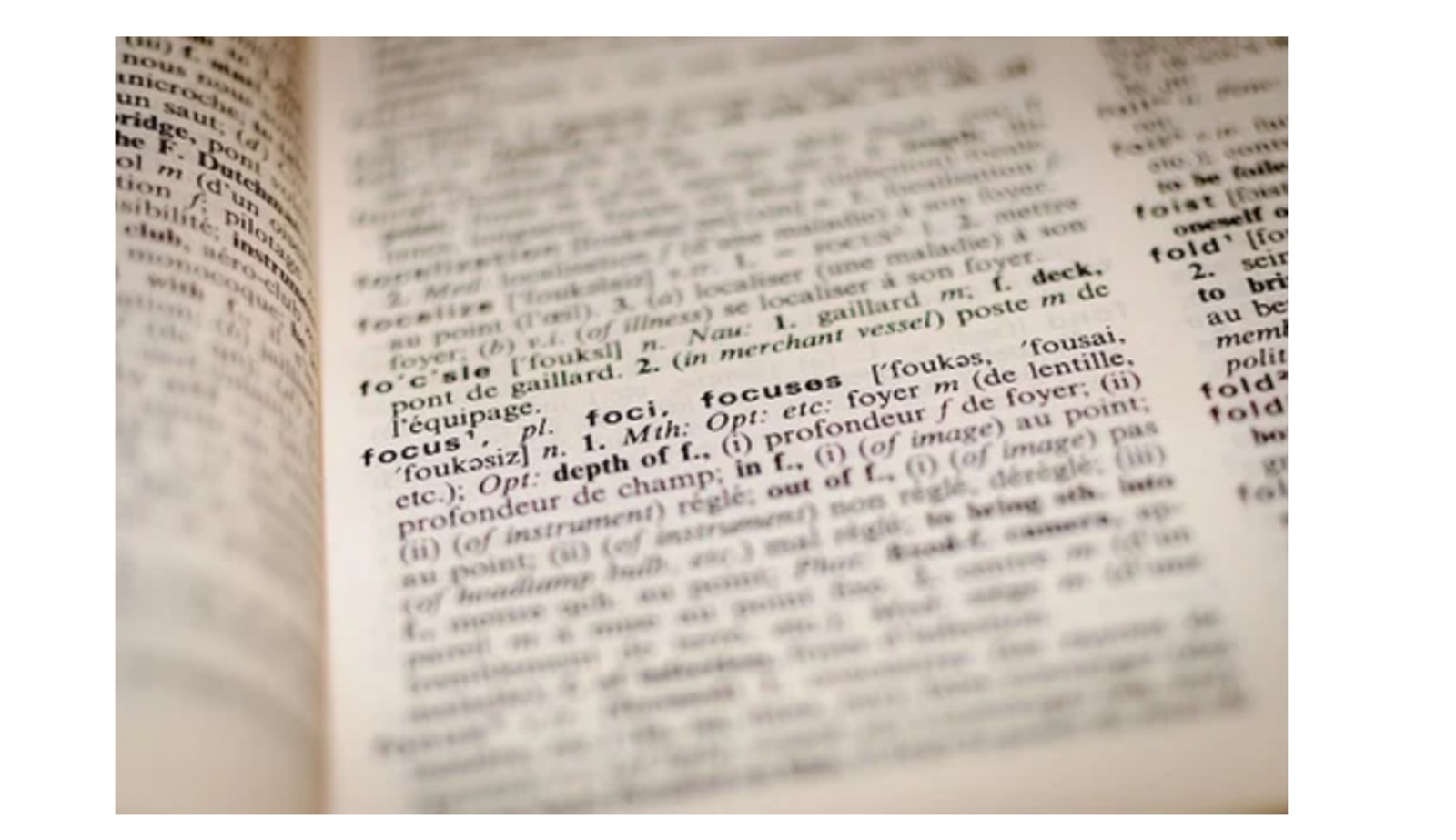
#4: Study the Right Kind of Vocabulary
The vocabulary questions on the SAT Writing section won't ask you to define obscure or advanced-level words. Instead, they focus on more commonly used words that may have nuanced meanings or different uses depending on context. Additionally, these questions often cover frequently confused words. For example, you might see a question asking you to choose between "outdo," "outweigh," and "outperform" based on the sentence’s meaning.
To prepare effectively, focus on studying vocabulary that emphasizes:
Nuances in meaning: Understand how the meaning of a word changes depending on the surrounding text.
Contextual usage: Pay attention to how common words can be used in unique or less familiar ways in different circumstances.
This approach not only helps with SAT Writing but also strengthens your performance on the SAT Reading section, where word choice and comprehension are equally important. Enhancing your vocabulary skills with this focus will lead to improved overall test performance.
#5: Practice Data Interpretation
The SAT integrates graphs, charts, and tables into all three sections—Reading, Writing, and Math. On the Writing section, about 2-4% of the questions will involve interpreting data from graphics. Although a small percentage, these questions are crucial and require specific preparation.
Here’s what data interpretation questions on SAT Writing might ask you to do:
Determine whether a sentence accurately conveys information presented in a graph or chart.
Combine data analysis with a Command of Evidence task, such as deciding whether to add a sentence to strengthen or clarify an argument based on information in a graphic.
To prepare for these questions, focus on honing your ability to extract meaning from charts and graphs, as well as identifying connections between the data and the written text. You'll find that these skills not only benefit your performance in SAT Writing but also enhance your abilities in the SAT Reading and Math sections.
Where to Practice
Use SAT practice questions containing graphics. The College Board offers official practice tests that include tasks involving tables, charts, and graphs.
For additional practice, try working with ACT Science questions. While the focus of these questions is slightly different, they offer valuable opportunities to build your data interpretation skills.
By mastering data interpretation and refining your understanding of context-based vocabulary, you’ll be well on your way to excelling on the SAT Writing section. These skills also have practical applications across other sections of the test, making your prep efforts even more worthwhile.
Before diving into your SAT Writing practice, let’s review the key features of this section!
Key Facts About SAT Writing and Language
The SAT Writing and Language section challenges you to think like an editor. In this section, you’ll be tasked with reading passages, identifying and fixing mistakes, and improving word choice, sentence structure, and overall organization. Success requires mastering both "little picture" skills, such as grammar, punctuation, and vocabulary, and "big picture" skills, including paragraph construction, logical flow, and argument development.
To effectively answer these multiple-choice, passage-based questions, you need a solid understanding of the English language—especially how it operates in constructing arguments, explanations, and nonfiction narratives. Developing your familiarity with grammar rules, contextual vocabulary, and the mechanics of writing will give you the foundation needed to confidently tackle these questions.
How to Succeed:
Refine your technical skills: Focus on grammar rules, punctuation, and word usage.
Build big-picture expertise: Practice analyzing passages for organization, clarity, and the development of ideas.
Read and write extensively: Exposure to a variety of writing styles, from essays to news articles, will enhance your comprehension and editing ability.
By strengthening these skills through consistent practice and study, you’ll improve your proficiency with the written word and put yourself on the path to mastering the SAT Writing and Language section.
Related Posts
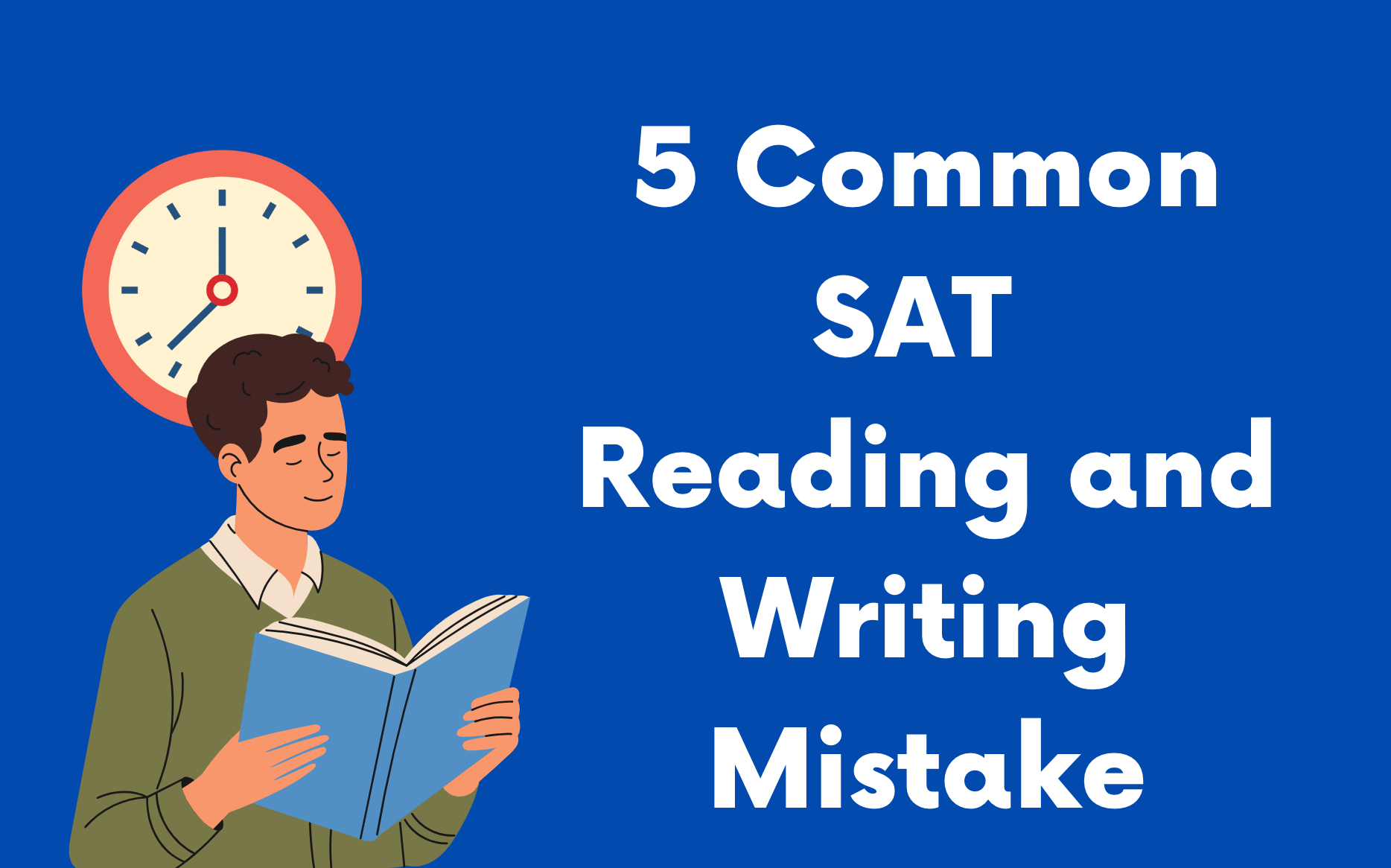
Struggling with the Digital SAT Reading & Writing section? Discover 5 common mistakes students make and actionable tips to boost your score!

Unlock your potential with key strategies to excel in the SAT Reading and Writing sections for top scores.